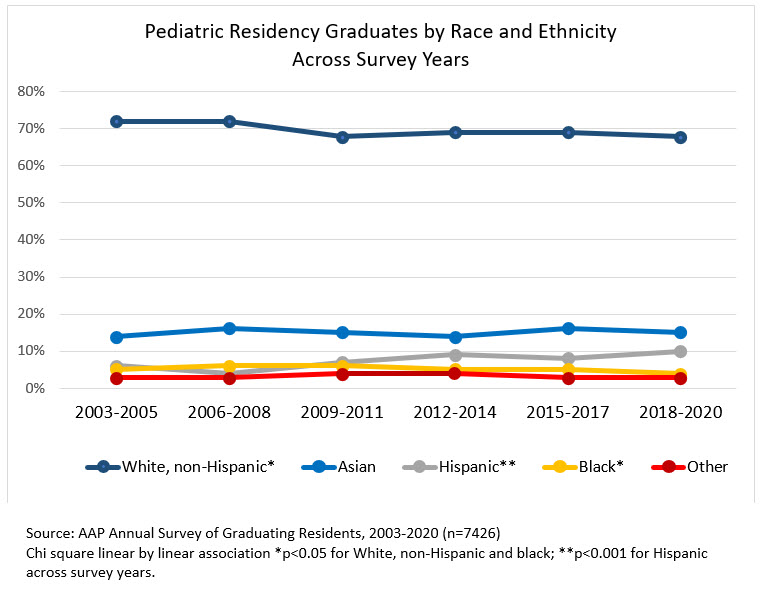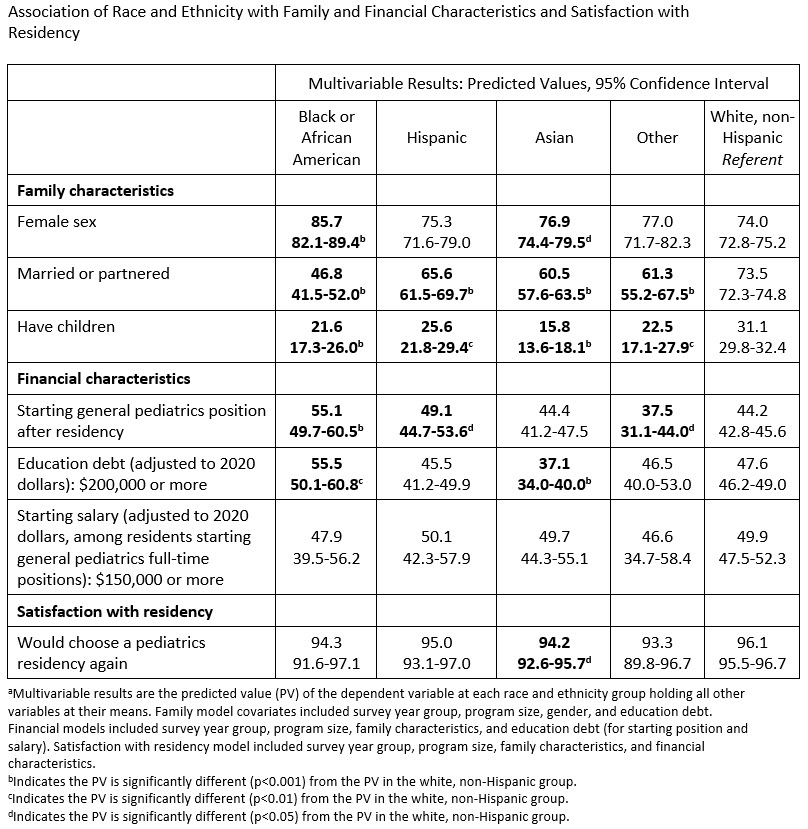Frintner MP, Fenton R, Guinn-Jones M, Sims AM
Presented at the 2021 Pediatric Academic Societies Annual Meeting
Background: Black or Latinx physicians are underrepresented in medicine. Comparisons of family and financial characteristics from residents of different racial and ethnic backgrounds might inform approaches to diversify the US pipeline to medicine.
Objective: Compare graduating residents’ family and financial characteristics and satisfaction, as well as satisfaction with training by race and ethnicity.
Methods: AAP Annual Survey of Graduating Residents was sent to national, random samples of up to 1,000 graduating pediatric residents each year from 2003-2020; 57% completed the surveys (48-64% across years). Cross-sectional responses were pooled; analyses focused on residents graduating from US medical schools. Racial and ethnic groups included 1)white, non-Hispanic; 2)Hispanic; 3)Black; 4)Asian; 5)other. Chi-square linear by linear association examined groups across years. Multivariable logistic regression estimated racial and ethnic differences using derived predicted values (PV) for a) family characteristics, b) financial characteristics, and c) satisfaction with residency training. Models controlled for survey year, program size, and resident characteristics.
Results: 80% of residents across years were US medical graduates. Among these residents (n=7426), 69% identified as white, non-Hispanic, 15% Asian, 7% Hispanic, 5% Black, 3% other. Across years, there were slight increases among the Hispanic group (6% in 2003-05 to 10% in 2018-20, p<0.001) and decreases among Black and white, non-Hispanic groups (Figure).
Family and financial characteristics varied by race and ethnicity, with the largest differences among Black residents (Table). Adjusting for survey year, program size and other resident characteristics, Black residents were more likely than white, non-Hispanic residents to report female sex (86% vs 74%, p<0.001), starting a general pediatrics position (55% vs 44%, p<0.001) and education debt of $200k or more (56% vs 48%, p<0.001). They were less likely to be partnered (47% vs 74%, p<0.001) and have children (22% vs 31%, p<0.001). Among graduates starting fulltime general pediatrics positions, starting salaries of $150k or more were similar across groups (Table). Nearly all (95%) were satisfied with training, with little variation across groups.
Conclusion: 5% of pediatric residents identify as Black. These residents have unique family characteristics and report higher education debt than other racial and ethnic groups. Approaches to diversify the pipeline of pediatricians might focus on reducing cost and debt.


Last Updated
07/19/2021
Source
American Academy of Pediatrics